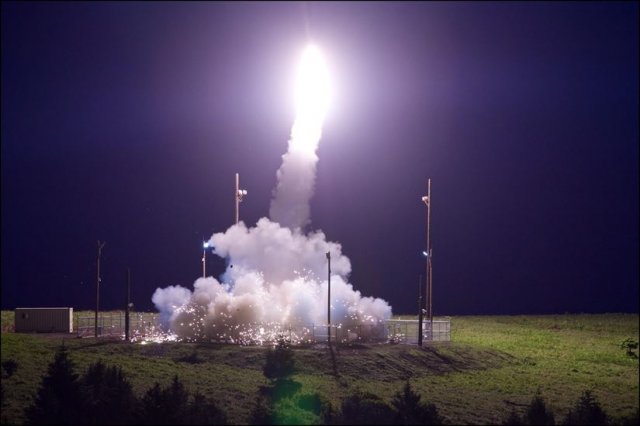By PAUL MCLEARY
 The delivery of the report was mandated by Congress in the 2018 defense authorization bill, but the final product had been delayed for months as the Pentagon carried out its study of various weapons systems that might be capable of being modified to fit the bill. A congressional staffer confirmed that the report has finally arrived on the Hill.
The delivery of the report was mandated by Congress in the 2018 defense authorization bill, but the final product had been delayed for months as the Pentagon carried out its study of various weapons systems that might be capable of being modified to fit the bill. A congressional staffer confirmed that the report has finally arrived on the Hill.
The briefing is classified but the likeliest indication of what’s in it is an unreleased report by the Joint Staff and Strategic Command that identified four roads for developing a missile capability that falls within the 500 km to 5,500 km range currently banned under the treaty. The report was obtained exclusively by Breaking Defense.
It is unclear what the short-term prospects for the INF are, since US officials have yet to notify Russia that they have started the clock on the six-month process to formally pull out of the pact.
In April, the Pentagon’s chief weapons buyer Ellen Lord initially said that her department’s study wasn’t ready, and sent a letter to the heads of the defense committees asking for more time. It was unclear, she explained, what “existing missile systems could be modified for such a role.”
Her letter said that the report would include “cost, schedule, and feasibility of modifying existing missile systems for a ground-launched range of between 500 and 5,500 kilometers, as compared with developing a new ground-launched missile system for the same range.”
On Wednesday, Russian President Vladimir Putin responded to the news of an impending US pullout: “If the United States does withdraw from the INF treaty, the main question is what they will do with these newly available missiles. If they will deliver them to Europe, naturally our response will have to mirror this.”
Putin, speaking in Moscow, warned NATO countries that would host the missiles “that they would expose their territory to the threat of a possible retaliatory strike.”
The Russian leader said he wasn’t surprised by the announcement. “If you have noticed – and we have – the US Congress has already allocated funds for intermediate- and shorter-range missile research and development,” he said. “This means that the decision has already been taken.”
It doesn’t appear that any NATO member is keen to allow the United States to plant its intermediate-range missiles on the continent, however. On Wednesday, NATO Secretary-General Jens Stoltenberg threw cold water on the idea that Washington would deploy missiles in Europe as it had in the 1980s. “We will assess the implications for NATO allies, for our security, of the new Russian missile,” he said. “But I don’t foresee that allies will station more nuclear weapons in Europe as a response to the new Russian missile.”
Stoltenberg blamed Russia for violating the treaty by developing the Novator 9M729, a land-based cruise missile which violates the ranges spelled out the in the 1987 treaty.
Former State Department and NSC official Lynn Rusten agreed, saying, “I don’t think we’d reintroduce the ground-based in Europe because I don’t think many of our allies would stand for it.”
NATO as an alliance “would have to make a decision as a whole, and I think in many countries there’d be tremendous resistance to returning to the days of intermediate ground-launched missiles in their countries, with the possibility that they’re nuclear armed, in an environment where Russia is free to do the same.”
Sydney Freedberg contributed to this report.
No comments:
Post a Comment